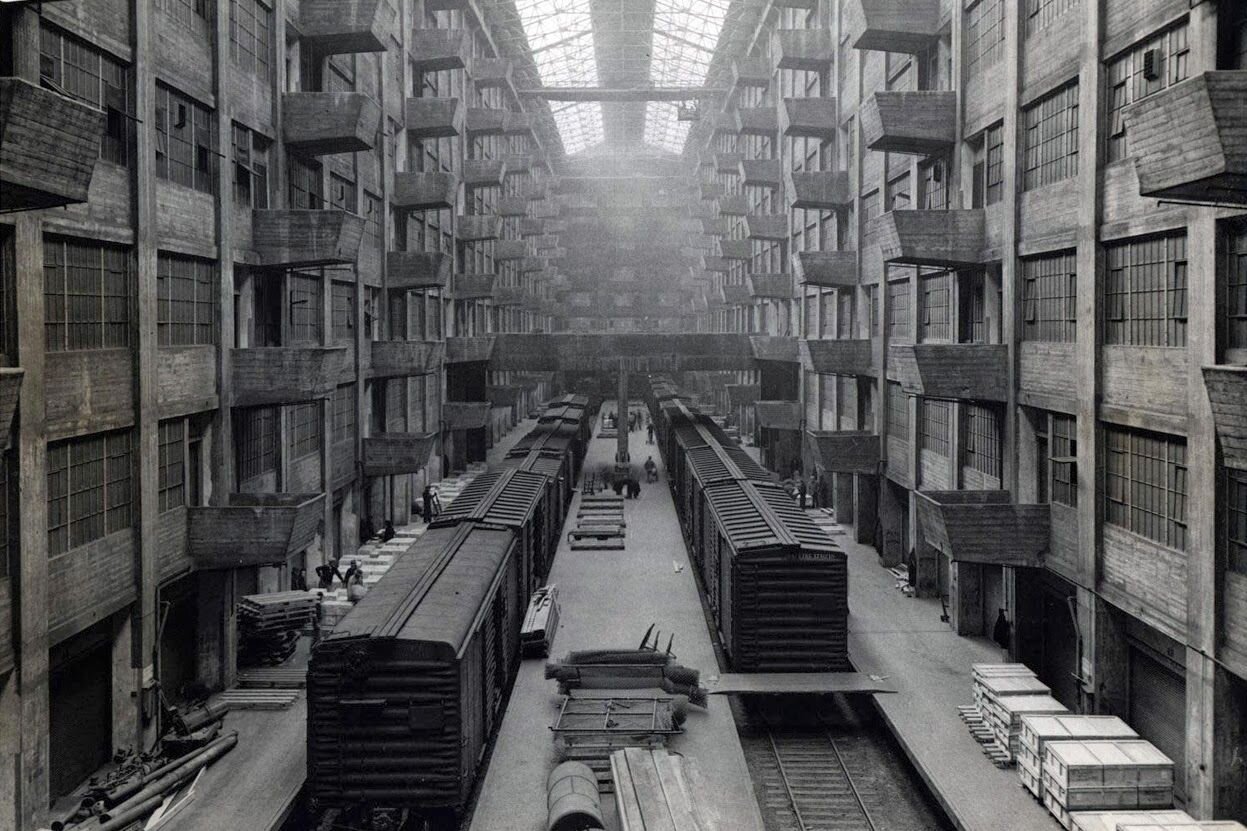Brooklyn Army Terminal
Brooklyn | New York | 1918
The Hero
The composition where it all began. This rendering is based off an existing photo which was a main source of inspiration for me when starting this project. It tells the entire story of the building in a single shot. To my amazement I found out that this building happened to be only 15 minutes away from where I live in Brooklyn and it’s now open to the public, so I went for a tour as soon as I could.

Reference Photo

Reference Photo

Reference Photo
The Unsung Hero
This building was a beast to model; but with Railclone on my side it somehow seemed more achievable. I didn’t have much to go off besides a rough floor plan I found online and the photos I took on site, so early on it required loads of guesswork to figure out all of the dimensions. I then tried to simplify things by breaking it down to a select number of components that made up the façade pattern, and from there the modeling was fairly straight forward, just damn time consuming.
These screenshots give an idea of everything that was modeled using Railclone; about 90% of what you see. Relying on Railclone for the heavy lifting made the scene quite manageable to work in and also allowed for a great deal of randomization built into the façade to avoid repetition. The only things I did not model myself were the train cars and some of the small assets.
On a large scene like this, keeping things organized always helps me sleep at night.
The Dirt
I love the concrete in this building. It’s grungy, stained from years under a leaky ceiling, and the wooden plank formwork has given it an incredible texture that helps break up the large spans of raw concrete. After seeing this building in person I was keen to give Substance Painter a try since I thought it would be the perfect tool to match the complexity of the materials without suffering from overly repetitive textures.
The next step was to learn Substance Painter… Very thankful for all of the great resources on the Algorithmic site.
Since I had committed to going all-in with Substance Painter early on in the project, I unwrapped each component during the modeling process for texturing later on. That part sucked, but I got a bit better at it as I went along. Once I had all of my components built I then continued on by creating a small library of smart materials in Substance Painter which I would re-apply and modify for each different component. I was sure to import each piece along with its surrounding geometry in order for all of the grunge and AO masks to do their thing.
I loved being able to generate a random seed for each procedural texture to get different results but I wish it was more straight forward. In the end I created 3 - 5 versions of each texture to plug into a Corona Multitexure, but it was quite a manual process to achieve this.
The Rendering
Corona Renderer was a beast at handling all of the 8K textures, displacement on everything, and atmospheric fog I threw at it during this project. (128 GB RAM Required to ride this ride) Most of these shots were lit with either HDRI lighting or a combination of HDRI and Corona Sun. I’ve also made good use of the Corona Lightmix to help dial in the mood of each individual shot.
The Post
Honestly not much to share about the Photoshopping since I was able to get quite good base renders straight out of the box. Overall I wanted to give the collection an aged photo type of look so I layered various noise, grain, and dust filters over top of one another to help break down the CG look. Added a bit of additional fog, and that’s about it.
High Resolution Images Below. Thanks for visiting.































